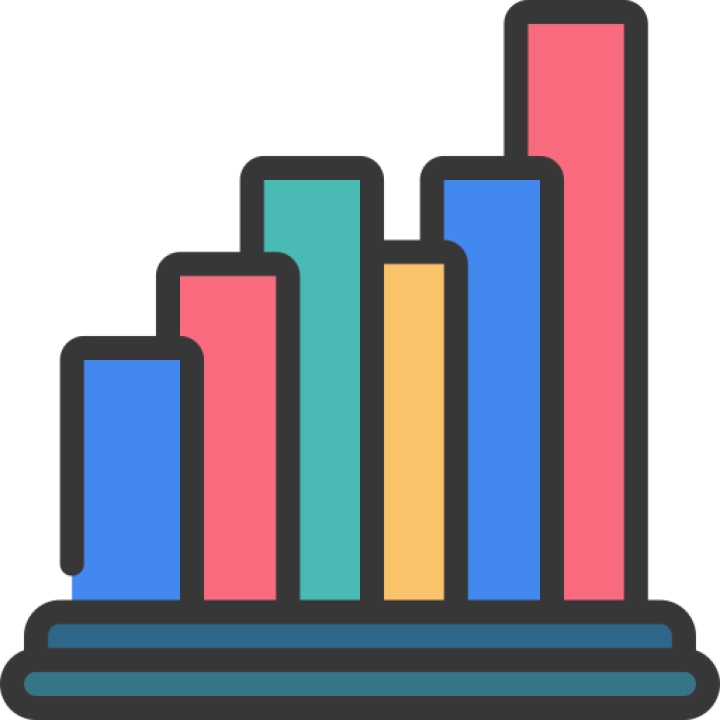College: Humanities and Social Sciences
This major focuses on the collection, analysis, interpretation, and presentation of digital data. Students explore key areas such as statistical theory, probability, data analysis, experimental design, and statistical computing. The program emphasizes applying statistical methods to solve real-world problems across various fields, including business, healthcare, social sciences, and engineering. Graduates are prepared for careers as statisticians, data analysts, research scientists, and consultants.
Learning Objectives:
- Understand the fundamentals of statistical theory and probability.
- Develop skills in data collection, analysis, and interpretation.
- Learn techniques in experimental design and statistical computing.
- Explore the application of statistical methods in various fields.
- Understand the role of statistics in decision-making and problem-solving.
- Analyze challenges and opportunities in statistical analysis.
- Develop teamwork and problem-solving skills for statistical projects and research.
Main Curriculum:
- Introduction to Statistics
- Overview of statistics, basic concepts, and applications.
- Basics of descriptive statistics and data visualization.
- Probability Theory
- Principles of probability, including random variables, distributions, and probability rules.
- Techniques for understanding and applying probability theory.
- Statistical Inference
- Basics of statistical inference, including estimation, hypothesis testing, and confidence intervals.
- Techniques for drawing conclusions from sample data.
- Data Analysis
- Methods of data analysis, including regression analysis, variance analysis, and multivariate analysis.
- Techniques for analyzing and interpreting data from various sources.
- Experimental Design
- Principles of experimental design, including randomized experiments, factorial designs, and response surface methodology.
- Techniques for designing and analyzing experiments.
- Statistical Computing
- Basics of statistical computing, including programming languages (e.g., R and Python) and software tools.
- Techniques for conducting statistical analyses using computational methods.
- Applied Statistics
- Application of statistical methods in different fields, including business, healthcare, social sciences, and engineering.
- Techniques for solving real-world problems using statistical analysis.
- Research Methods in Statistics
- Principles of research methods in statistics, including study design, data collection, and analysis.
- Techniques for conducting and evaluating statistical research.
- Statistics Capstone Project
- A real-world project to apply acquired skills in data analysis, experimental design, or statistical computing.
- Techniques to provide comprehensive solutions to statistical challenges.
- Elective Courses in Statistics
- Specialized courses in areas such as time series analysis, survival analysis, and machine learning.
- Opportunities to explore advanced topics and specializations in statistics.
Assessment Methods:
- Statistical analyses, applications of probability theory, data analysis projects, experimental design reports, statistical computing assignments, applied statistics projects, research methodology papers, capstone projects, group projects, and internships.
Recommended Textbooks:
- Introduction to the Practice of Statistics by David S. Moore, George P. McCabe, and Bruce A. Craig.
- Probability and Statistics by Morris H. DeGroot and Mark J. Schervish.
- Applied Linear Statistical Models by Michael H. Kutner, Christopher J. Nachtsheim, John Neter, and William Li.
- Design and Analysis of Experiments by Douglas C. Montgomery.
- R for Data Science by Garrett Grolemund and Hadley Wickham.
Prerequisites:
Basic knowledge of mathematics, particularly algebra and calculus. Suitable for students interested in statistics, data analysis, research, and related fields.
Duration of the Program:
Typically 4 years for a bachelor's degree, including coursework, projects, and internships. Advanced degrees may take additional years.
Degree:
Graduates may earn a degree in statistics and pursue professional certifications such as Certified Statistician or Data Scientist.
Target Audience:
Aspiring statisticians, data analysts, research scientists, consultants, and professionals seeking specialization in statistical analysis and data science. This major equips students with statistical knowledge and analytical skills necessary to excel in various fields and solve real-world problems through statistical analysis and data interpretation.

